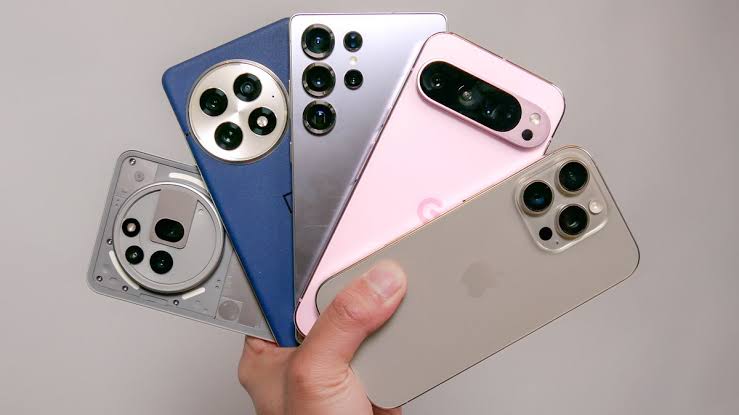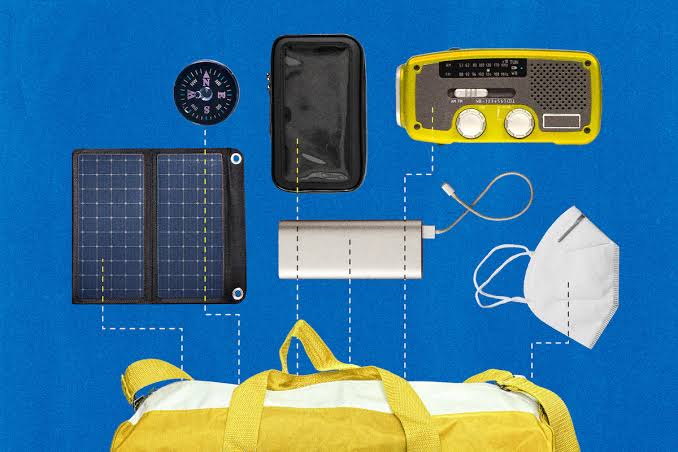Smartphones have become indispensable tools in our daily lives, and the pace of innovation in this space continues to accelerate. As of July 2025, the market for flagship smartphones has reached new heights with major brands introducing advanced features that push the limits of mobile technology. From AI-enhanced photography and foldable screens to satellite connectivity and energy-efficient chipsets, the newest generation of flagship phones is not just about style or speed—they represent a blend of performance, design, and smart functionality.
This review takes a detailed look at some of the most talked-about flagship smartphones of 2025, examining their features, performance, camera capabilities, battery life, and user experience. For anyone considering an upgrade or curious about where smartphone technology is headed, this comparison offers a well-rounded guide to the best the market has to offer.
Apple iPhone 16 Pro Max: Power Meets Precision
Apple’s iPhone 16 Pro Max, released in May 2025, continues to build on its reputation for quality, performance, and ecosystem integration. Featuring the new A18 Pro chip built on a 2-nanometer process, the phone delivers unmatched processing power with improved energy efficiency. The device is equipped with a 6.9-inch Super Retina XDR display, now brighter and more responsive, making it ideal for outdoor use and gaming.
The iPhone 16 Pro Max introduces advanced computational photography with its triple-lens system, offering better low-light performance, 8K video recording, and real-time depth mapping for cinematic-quality videos. Apple also introduced AI-enhanced editing tools directly in the Photos app, allowing users to auto-enhance videos using machine learning without needing third-party software.
Other notable features include satellite-based emergency messaging, improved Face ID under-display sensor, and a titanium build that makes it lighter yet more durable. While premium in price, the iPhone 16 Pro Max remains a top choice for users deeply embedded in the Apple ecosystem.
Samsung Galaxy S25 Ultra: A Multimedia Powerhouse
Samsung’s Galaxy S25 Ultra, launched in early 2025, stands as one of the most advanced Android smartphones available. Boasting a massive 6.8-inch Dynamic AMOLED 2X display with 144Hz refresh rate, the screen quality is exceptional for video consumption, gaming, and creative work. Powered by the Snapdragon 8 Gen 4 processor, it offers rapid multitasking, high-end gaming performance, and efficient battery use.
Camera-wise, the S25 Ultra features a quad-lens setup with a 200MP main sensor, a periscope lens with 12x optical zoom, and AI-enhanced image stabilization that adapts to user motion. Its Nightography 2.0 mode delivers crystal-clear low-light photography, putting it among the best for mobile photographers.
Battery performance is also impressive, thanks to a 5,500mAh battery and 65W fast charging. The S25 Ultra supports Samsung DeX, stylus input with the integrated S Pen, and enhanced multitasking features, making it a productivity beast. For Android users, it offers a complete experience with flexibility, power, and style.
Google Pixel 9 Pro XL: The AI Trailblazer
Google’s Pixel 9 Pro XL has positioned itself as the smartest smartphone of 2025, thanks to its advanced AI integration. Powered by Google’s new Tensor G4 chip, the device enhances nearly every user interaction—from smarter battery optimization and real-time translation to AI call screening and photography.
The Pixel 9 Pro XL features a 6.7-inch LTPO OLED display and a dual-tone design that maintains its iconic look. Its triple-lens camera system, co-engineered with Google’s software, delivers stunning results, especially in computational photography. New features include Magic Editor 2.0, which allows users to erase objects, shift lighting, and move subjects with simple touch gestures.
What sets the Pixel apart is its clean Android interface, fast updates, and tightly integrated Google services. It also introduces on-device AI for privacy, ensuring that features like smart reply and voice commands don’t require data upload to the cloud. For users who value intelligence and simplicity, the Pixel 9 Pro XL is a standout choice.
OnePlus 13 Pro: Speed and Affordability Combined
OnePlus has carved out a niche for delivering flagship specs at competitive prices, and the OnePlus 13 Pro continues that tradition. It sports a 6.78-inch curved AMOLED display with 2K resolution and a 144Hz refresh rate, making it great for immersive content. Under the hood, it’s powered by the Snapdragon 8 Gen 4 processor and features up to 16GB of RAM for ultra-fast multitasking.
Its camera system, co-developed with Hasselblad, includes a 108MP main sensor, ultra-wide lens, and a telephoto shooter that handles portrait shots with elegance. While not as dominant as the Samsung or Apple cameras, it still offers great image processing for most users.
OnePlus has also improved battery life with a 5,200mAh unit and supports 100W wired charging, bringing the phone from 0% to 100% in just under 25 minutes. For Android enthusiasts looking for premium features without the hefty price tag, the OnePlus 13 Pro remains a solid and increasingly popular option.
Xiaomi 15 Ultra: Innovation and Value
Xiaomi has made significant strides in the global smartphone market, and the Xiaomi 15 Ultra is its most impressive flagship yet. Packed with a 1-inch main sensor, variable aperture camera, and advanced cooling system, it’s a powerhouse for creators and mobile photographers.
Its display is a 6.73-inch AMOLED panel with Dolby Vision support and a peak brightness of 2,800 nits. Under the hood, the device runs on the Dimensity 9400 chipset, providing high-end performance and thermal efficiency. The software experience with Xiaomi’s HyperOS 2.0 is more refined and globally optimized than in past versions.
The 15 Ultra also supports 120W wired charging and 80W wireless charging—among the fastest in the market today. While still more popular in Asia and Europe, Xiaomi’s flagship phones are quickly gaining traction in North America due to their feature-rich approach and aggressive pricing strategy.
Final Thoughts
The smartphone landscape in July 2025 reflects a deepening commitment to innovation, AI integration, and user-centric design. Apple’s iPhone 16 Pro Max leads with ecosystem synergy and processing power, while Samsung’s Galaxy S25 Ultra shines as a multimedia and productivity juggernaut. Google’s Pixel 9 Pro XL redefines intelligence on a smartphone, OnePlus 13 Pro brings speed and value, and Xiaomi 15 Ultra pushes boundaries with camera hardware and fast charging.
Choosing the right flagship in 2025 depends largely on what you value most—be it camera performance, ecosystem integration, AI features, or affordability. But regardless of brand preference, it’s clear that smartphones have become more than communication tools—they’re now central to how we work, create, and connect in an increasingly digital world.



